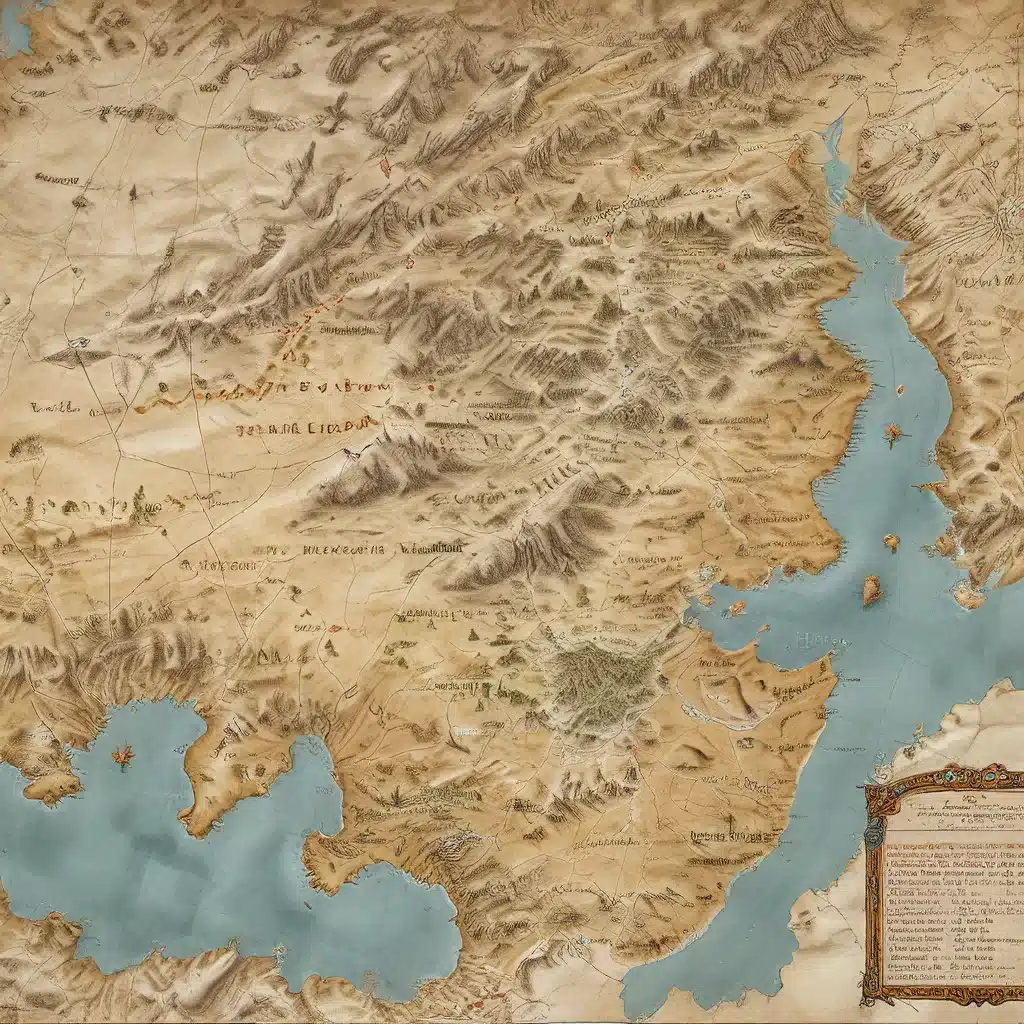
The study of ancient civilizations and their archaeological remains has long captivated the human imagination. From the towering pyramids of Egypt to the enigmatic Nazca lines of Peru, the relics of the past offer a tantalizing glimpse into the rich tapestry of human history. Among the most intriguing and enigmatic of these ancient realms are the forgotten kingdoms that once flourished across the globe, leaving behind a trail of mysteries and unanswered questions.
Unveiling the Mysteries of Forgotten Realms
One such forgotten realm that has captured the attention of scholars and enthusiasts alike is the Poverty Point site in Louisiana, United States. This massive earthen complex, dating back to around 1700-1100 BCE, was once a thriving ceremonial center and trade hub, boasting a series of concentric earthworks, mounds, and plazas that suggest a highly organized and sophisticated society. Despite its impressive scale and complexity, the true purpose and cultural significance of Poverty Point have long remained elusive, with ongoing debates among archaeologists and historians.
Another intriguing example of a forgotten realm is the Tiwanaku civilization, which flourished in the Andes Mountains of Bolivia from around 500 to 1000 CE. This ancient culture is renowned for its impressive architectural feats, including massive stone structures, intricate carvings, and advanced engineering techniques that have left modern scholars in awe. Yet, the factors that led to the eventual decline and abandonment of Tiwanaku continue to be the subject of intense scholarly investigation, with theories ranging from environmental changes to sociopolitical upheaval.
Unveiling Ancient Cultures through Archaeological Discoveries
The study of these forgotten realms is not just about unearthing the physical remnants of the past; it is also about piecing together the complex web of cultural, social, and economic systems that once thrived in these regions. Through the careful analysis of artifacts, architectural features, and environmental data, archaeologists and historians are able to reconstruct the daily lives, beliefs, and technological advancements of these ancient civilizations.
For instance, the Nazca lines of Peru, a series of geoglyphs etched into the Andean desert, have long been a source of fascination and speculation. While their exact purpose remains a mystery, the intricate designs and sheer scale of these ancient markings have led some scholars to suggest that they may have served as astronomical or ritualistic purposes, potentially offering insights into the cosmological beliefs of the Nazca people.
Similarly, the Mohenjo-daro ruins in Pakistan, once a thriving urban center of the Indus Valley Civilization, have revealed remarkable insights into the advanced urban planning and sanitation systems of this ancient culture. The discovery of well-planned streets, drainage systems, and standardized brick architecture has challenged the traditional view of ancient civilizations as primitive, underscoring the sophisticated and innovative nature of these forgotten realms.
Emerging Theories and New Discoveries
As the field of archaeology and historical research continues to evolve, new and exciting discoveries are being made that shed light on the mysteries of the past. In recent years, for example, the rediscovery of the ancient city of Noemfoor in Indonesia has sparked renewed interest in the lost kingdoms of Southeast Asia. Buried beneath dense jungle vegetation for centuries, this once-thriving civilization has yielded a treasure trove of artifacts, architectural remains, and inscriptions that are helping researchers better understand the cultural exchanges and trading networks that connected these distant realms.
Equally intriguing are the ongoing investigations into the mysterious Nazca culture and the possible extraterrestrial connections that have been proposed by some researchers. While these theories remain highly speculative, they highlight the enduring fascination with the unknown and the desire to uncover the hidden secrets of the past.
As we continue to explore and uncover the remnants of these forgotten realms, we are not only expanding our knowledge of human history but also challenging our preconceptions about the capabilities and ingenuity of ancient civilizations. Each new discovery serves as a reminder that there is still so much to be learned about the rich and diverse tapestry of the past, waiting to be unearthed and woven into our understanding of the world.
The Significance of Preserving and Studying Forgotten Realms
The preservation and study of these forgotten realms are not only crucial for our understanding of the past but also for shaping our future. By unlocking the secrets of these ancient cultures, we can gain valuable insights into the sustainable practices, innovative technologies, and social organization that allowed these civilizations to thrive, potentially informing our own efforts to address contemporary challenges.
Moreover, the exploration of these forgotten realms has the power to challenge and expand our perspectives, forcing us to confront our own biases and preconceptions about the capabilities and achievements of past societies. As we uncover the rich cultural heritage and technological advancements of these ancient civilizations, we are reminded of the remarkable diversity and resilience of the human experience, inspiring us to approach the future with greater humility, curiosity, and respect for the wisdom of the past.
At The Lost Kingdoms, we are committed to preserving and sharing the stories of these forgotten realms, celebrating the remarkable achievements of our ancestors and the enduring mysteries that continue to captivate the human imagination. Join us as we embark on a journey of discovery and enlightenment, charting the landscape of antiquity and unlocking the secrets of the past.


